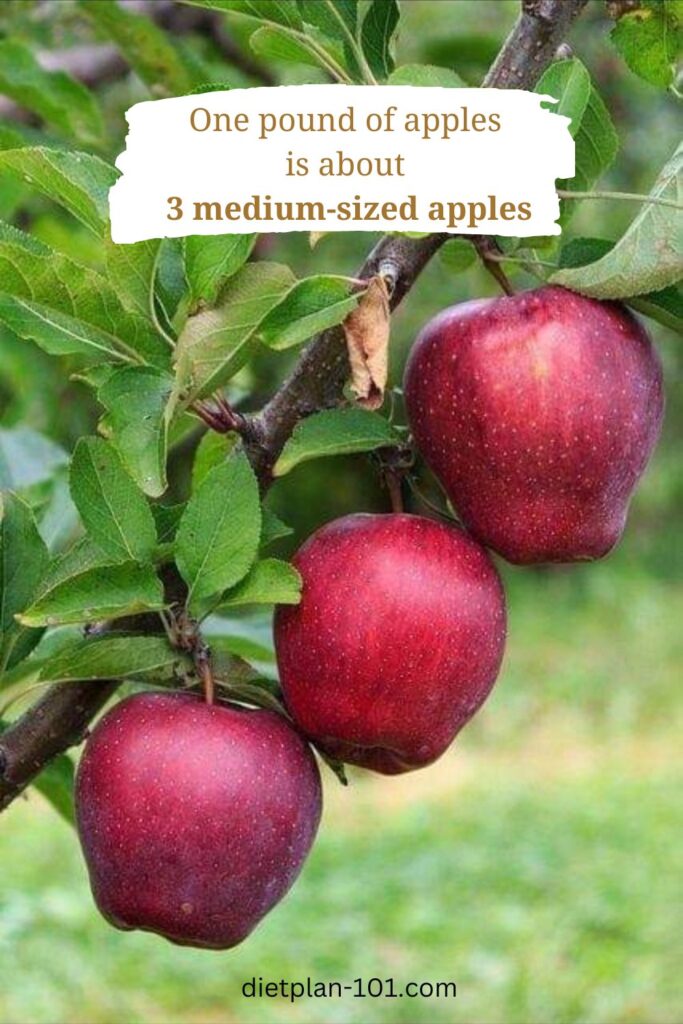Table of Contents
When you’re buying apples for a recipe, it helps to know how many are in each pound. This will help you make sure you have enough apples to cover the recipe’s requirements.
Why do so many cooking recipes call for specifying a weight, not cups or other measurements? Because apples come in a variety of sizes, and even within the same type. The weight of a Granny Smith apple can vary based on several factors. On average, a Granny Smith apple weighs between 100 to 200 grams (3.5 to 7 ounces), but larger or smaller apples are also common.
That’s a huge difference, because of the variables involved, it makes sense for recipe writers to specify weight rather than the number of apples.
What is a Pound (lb)
Let’s start by clarifying what a pound is. A pound (lb) is a unit of weight commonly used in the United States. It’s equivalent to 16 ounces or 453.6 grams. When it comes to apples, a pound can consist of several smaller apples or just a few large ones.
The Average Weight of Apples
The United States Department of Agriculture (USDA) stated that a medium-sized apple typically weighs around 182 grams or approximately 6.4 ounces. However, this weight is subject to variation depending on the specific variety of apple. For instance, a medium-sized Honeycrisp apple may weigh closer to 7 ounces, while a smaller McIntosh apple might come in at around 5.5 ounces.
When considering a pound of apples, this usually equates to about three medium-sized apples. A medium apple is generally one that comfortably fits in the palm of your hand.
Keep in mind, though, that the weight may fluctuate based on the apple variety you choose.
Factors Affecting Apple Weight
The weight of an apple can be influenced by several factors, such as its ripeness, variety, and growing conditions.
Ripe apples tend to be heavier due to their higher water content, while apples harvested early in the season might be lighter.
Different apple varieties also have different sizes and densities, leading to variations in weight. Furthermore, growing conditions such as soil quality, climate, and farming practices can affect the size and weight of apples.
Different Perspectives on Apple Measurements
Apple growers, consumers, and chefs all have different perspectives on the importance of apple weight.
Growers focus on producing consistent, high-quality apples that meet specific weight and size requirements.
Consumers, on the other hand, might be more concerned with the weight of apples when buying them for a specific recipe.
Chefs often prioritize the flavor and texture of apples, but may still need to consider weight for recipe accuracy.
Common Misconceptions
One common misconception is that all apples are the same size and weight. As we’ve seen, this simply isn’t true.
Apples can vary greatly in size, density, and weight, even within the same variety. When measuring apples for a recipe, it’s important to consider the size of each apple.
Tips and Tricks for Measuring Apples for Cooking
To measure apples precisely, weigh them on a kitchen scale. This will give you the most accurate measurement for your recipe.
If you don’t have a scale, remember what we discussed earlier about what makes up a medium size apple:
A pound of apples is approximately three medium-sized fruit. Each apple must be about the size that can comfortably fit in your palm to qualify as a medium apple.
Keep in mind that these estimations may not be perfect, but they can give you a rough idea of the apple’s weight.
The Bottom Line
Now that you know more about the weight of apples, it’s time to put your newfound knowledge to use!
Whether you’re making a delicious apple pie or simply enjoying a crisp, juicy apple as a snack, understanding the weight of apples can help you make better choices in the kitchen.
So go ahead and share your experiences, insights, and apple recipes with others—let’s continue to explore the wonderful world of apples together!
Remember to keep the conversation going and connect with others who share your love for apples. Happy apple-counting!






